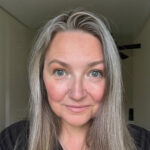Depression and Emotional Health
Depression is more than just feeling sad. It is a serious mental health condition that affects how a person thinks, feels, and acts. Emotional health is about understanding and managing feelings in healthy ways. When emotional health suffers, depression can develop or worsen.
Learning how depression and emotional health are linked helps people recognize the signs, support others, and seek help when needed. This connection matters because it reminds people that caring for emotions is essential to protecting overall well-being and living healthier, more balanced lives.

Defining Major Depressive Disorder
According to the National Institute of Mental Health, major depressive disorder (MDD) affects around 17 million adults in the United States every year, and it can begin as early as the teen years [1].
MDD is a medical condition that affects mood, thoughts, and energy levels. It can cause people to feel hopeless, lose interest in previously enjoyed activities, or struggle to sleep, eat, or concentrate.
While it’s normal to feel sad or down at times, major depressive disorder is more than just a passing mood; it affects how a person thinks, feels, and functions. It can impact sleep, appetite, energy, motivation, and the ability to enjoy life. Depression often disrupts school, work, and relationships. Unlike temporary sadness, depression doesn’t just go away on its own. It lasts weeks or longer and can return throughout a person’s life [2].
It is important to remember that depression is not a personal weakness or flaw. It’s a mental health condition that requires attention, care, and often professional treatment, just like any other medical illness.
Causes of Depression
There is no single cause of depression. A family history of depression or other mental health conditions can increase the risk, suggesting that genetics may make a person more vulnerable. Some people develop depression after stressful or traumatic events, such as bullying or a death [3].
Brain chemicals called neurotransmitters also play a role. When levels of chemicals like serotonin or dopamine are low or unbalanced, changes in mood and behavior occur. Hormonal changes during puberty can also affect emotional and mental health [4].
Stress is another major factor. The more stress someone faces, the higher the risk for emotional health issues and depression. According to the Centers for Disease Control and Prevention (CDC), teens facing ongoing stress or trauma are more likely to experience depression [5].
Since the causes of depression are complex and often not outwardly visible, recognizing the condition isn’t always easy. Two people may experience depression very differently, even when faced with similar life events.
That’s why support from a qualified mental health professional is so important. Using specialized training and diagnostic tools, a clinician can identify the signs and determine whether someone is experiencing depression or another mental health concern.
Diagnosing Depression
Mental health professionals use a combination of clinical interviews, behavioral assessments, and standardized tools to diagnose depression. They may ask detailed questions about symptoms, mood patterns, sleep habits, and daily functioning.
Questionnaires such as the PHQ-9 (Patient Health Questionnaire) or Beck Depression Inventory are sometimes used to better understand the severity and impact of depressive symptoms. Input from family members or teachers helps paint a fuller picture, especially when assessing adolescents [6].
One key tool for diagnosis is the Diagnostic and Statistical Manual of Mental Disorders, Fifth Edition (DSM-5), to diagnose Major Depressive Disorder. According to the DSM-5, at least five of the following symptoms must be present during the same two-week period, and one must be either depressed mood or loss of interest or pleasure [7]:
- Depressed mood most of the day
- Markedly diminished interest or pleasure in activities
- Significant weight or appetite changes
- Insomnia or excessive sleeping
- Restlessness or slowed movements
- Fatigue or low energy
- Feelings of worthlessness or guilt
- Difficulty concentrating or making decisions
- Recurrent thoughts of death or suicide
As depression can affect many aspects of a person’s emotional and physical well-being, getting an accurate diagnosis is an essential first step.
Effective treatment not only targets the symptoms of depression but also promotes overall mental wellness by supporting emotional resilience and coping skills.
Emotional Health’s Impact on Depression
The strong connection between emotional health and depression helps explain why some people may be more vulnerable to this mental health condition and how building emotional skills can offer protection.
Emotional health is a part of mental health that involves understanding and managing feelings. When someone has good emotional health, the person can handle stress, express emotions in healthy ways, and build strong relationships. Emotional health supports positive choices and helps people recover from setbacks.
Poor emotional health makes it harder to cope with daily challenges. People may feel overwhelmed, anxious, or withdrawn, even when facing problems that initially seem small.
Stressors like school pressure, family conflict, or social struggles are often difficult to manage without practiced emotional tools. When emotions are ignored or bottled up, stress builds and may lead to emotional exhaustion. Over time, this can increase the risk of developing depression, especially without support or healthy coping strategies [8].
However, research shows that emotional resilience, the ability to bounce back from stress, can help protect people from developing depression [8]. Emotionally resilient people are better equipped to manage challenges in healthier ways. Resilience is linked to stronger self-awareness, more effective problem-solving skills, and the ability to build stable support systems.
Emotional strength develops by learning how to discuss feelings honestly, practicing self-care, and asking for help when needed. These skills are learned over time and play a key role in maintaining mental wellness and reducing the impact of depression.
How Depression Harms Emotional Balance
The relationship between depression and emotional health can become a complex cycle. Poor emotional health can increase a person’s risk of developing depression, especially when stress builds up without healthy ways to cope.
At the same time, undiagnosed or untreated depression can weaken emotional health even further, making it harder to manage feelings and stay connected to others.
Research shows that depression is linked to changes in key brain areas, such as the hippocampus, amygdala, and prefrontal cortex, regions responsible for emotion regulation, memory, and decision-making [9].
Neurotransmitter imbalances also make it harder for the brain to manage stress and experience pleasure [9]. As a result, emotions can feel flat, intense, or out of control. A person might feel sad for no reason, or they might feel numb, disconnected, and unable to concentrate. These emotional changes are not a choice but rather a result of how depression impacts the brain.
Depression also makes managing everyday emotions difficult. Minor problems can suddenly feel overwhelming, and reactions may seem disproportionate to the situation. Crying spells may become more frequent, and irritability can arise from minor frustrations.
Some people begin to withdraw from close relationships, feeling unworthy of love or burdened by shame. This emotional pain often leads to isolation, which, in turn, deepens the depression [2].
Emotional Self-Care Tips
Improving emotional health can help prevent or reduce the effects of depression. People who learn healthy ways to deal with stress, talk about their feelings, and build supportive relationships are more likely to recover from tough times.
Because emotional health and depression influence each other, building strong emotional habits is one way to help interrupt this complex cycle. When people take steps to care for their emotional well-being, it can strengthen stress coping abilities, protect mental health, and reduce the risk of developing depression [8]. Emotional self-care is a powerful and proactive part of staying well.
Practicing emotional self-care is one way to build emotional strength. This includes regular activities like:
- Journaling
- Mindfulness or meditation
- Physical activity
- Connecting with others
- Exploring creative outlets
- Setting boundaries
School programs and therapy also play a significant role. For example, cognitive behavioral therapy (CBT) teaches people how to change negative thinking patterns and develop better coping skills. Studies show that CBT is effective in reducing symptoms of depression in teens [10].
The right tools and a thoughtful care plan help people understand emotions, build resilience, and make positive changes. This can lead to improved emotional health and fewer symptoms of depression.
Seeking Help and Reducing Stigma
One of the bigger challenges for people with depression is asking for help. Many fear being judged or misunderstood, but depression is a medical condition that requires support and treatment.
Talking to a trusted friend, family member, or mental health professional is a strong first step. There are also mental health hotlines and text services for people who need someone to talk to. The important thing to know is that no one has to deal with depression alone.
Reducing stigma means creating a safe space for people to talk about depression, mental health, and emotional health. Schools, workplaces, families, and communities can all help by listening without judgment, sharing facts, and encouraging open conversations.
When people understand the connection between emotional health and depression, it is easier to show empathy and take action.
Breaking the Silence Around Depression
Understanding the connection between depression and emotional health is essential for supporting mental well-being.
Emotional struggles can affect how a person thinks, feels, and behaves, sometimes making it harder to recognize when something is wrong. These changes can manifest in many ways, leaving a person feeling overwhelmed and hopeless. Identifying these shifts early makes it possible to seek help and begin feeling better sooner.
Open conversations about depression and emotional health help reduce stigma, create empathy, and remind others that support is available. Reaching out to a trusted friend, family member, teacher, or counselor can make a big difference.
No one should feel isolated or ashamed for needing help. With the proper care and understanding, healing is always possible, and emotional health can improve. Everyone deserves compassion, hope, and the opportunity to feel better.
- National Institute of Mental Health. (2023). Major depression. https://www.nimh.nih.gov/health/statistics/major-depression.
- American Psychological Association. (2022). Understanding depression. https://www.apa.org/topics/depression.
- Filatova, E. V., Shadrina, M. I., & Slominsky, P. A. (2021). Major Depression: One Brain, One Disease, One Set of Intertwined Processes. Cells, 10(6), 1283. https://doi.org/10.3390/cells10061283.
- Arain, M., Haque, M., Johal, L., Mathur, P., Nel, W., Rais, A., Sandhu, R., & Sharma, S. (2013). Maturation of the adolescent brain. Neuropsychiatric Disease and Treatment, 9, 449. https://doi.org/10.2147/NDT.S39776.
- Centers for Disease Control and Prevention. (2023). Anxiety and depression in children. https://www.cdc.gov/children-mental-health/about/about-anxiety-and-depression-in-children.html.
- Maurer, D. M., Raymond, T. J., & Davis, B. N. (2018). Depression: Screening and diagnosis. American Family Physician, 98(8), 508–515. https://www.aafp.org/pubs/afp/issues/2018/1015/p508.html.
- American Psychiatric Association. (2022). Diagnostic and statistical manual of mental disorders (5th ed., text rev.). American Psychiatric Publishing
- Southwick, S. M., & Charney, D. S. (2018). Resilience: The science of mastering life’s greatest challenges (2nd ed.). Cambridge University Press
- Liu, Y., Wang, L., & Zhang, J. (2017). The role of neural plasticity in depression: From hippocampus to prefrontal cortex. Neural Plasticity, 2017, 6871089. https://doi.org/10.1155/2017/6871089.
- Klein, J. B., Jacobs, R. H., & Reinecke, M. A. (2007). Cognitive-behavioral therapy for adolescent depression: A meta-analytic investigation of changes in effect-size estimates. Journal of the American Academy of Child & Adolescent Psychiatry, 46(11), 1403–1413. https://doi.org/10.1097/chi.0b013e3180592aaa.
The Clinical Affairs Team at MentalHealth.com is a dedicated group of medical professionals with diverse and extensive clinical experience. They actively contribute to the development of content, products, and services, and meticulously review all medical material before publication to ensure accuracy and alignment with current research and conversations in mental health. For more information, please visit the Editorial Policy.
We are a health technology company that guides people toward self-understanding and connection. The platform provides reliable resources, accessible services, and nurturing communities. Its purpose is to educate, support, and empower people in their pursuit of well-being.
Christine Dayton is a professional health writer with over a decade of experience in geriatric care and wellness, mental health, end-of-life support, and bereavement care.
Shivani Kharod, Ph.D. is a medical reviewer with over 10 years of experience in delivering scientifically accurate health content.
The Clinical Affairs Team at MentalHealth.com is a dedicated group of medical professionals with diverse and extensive clinical experience. They actively contribute to the development of content, products, and services, and meticulously review all medical material before publication to ensure accuracy and alignment with current research and conversations in mental health. For more information, please visit the Editorial Policy.
We are a health technology company that guides people toward self-understanding and connection. The platform provides reliable resources, accessible services, and nurturing communities. Its purpose is to educate, support, and empower people in their pursuit of well-being.


